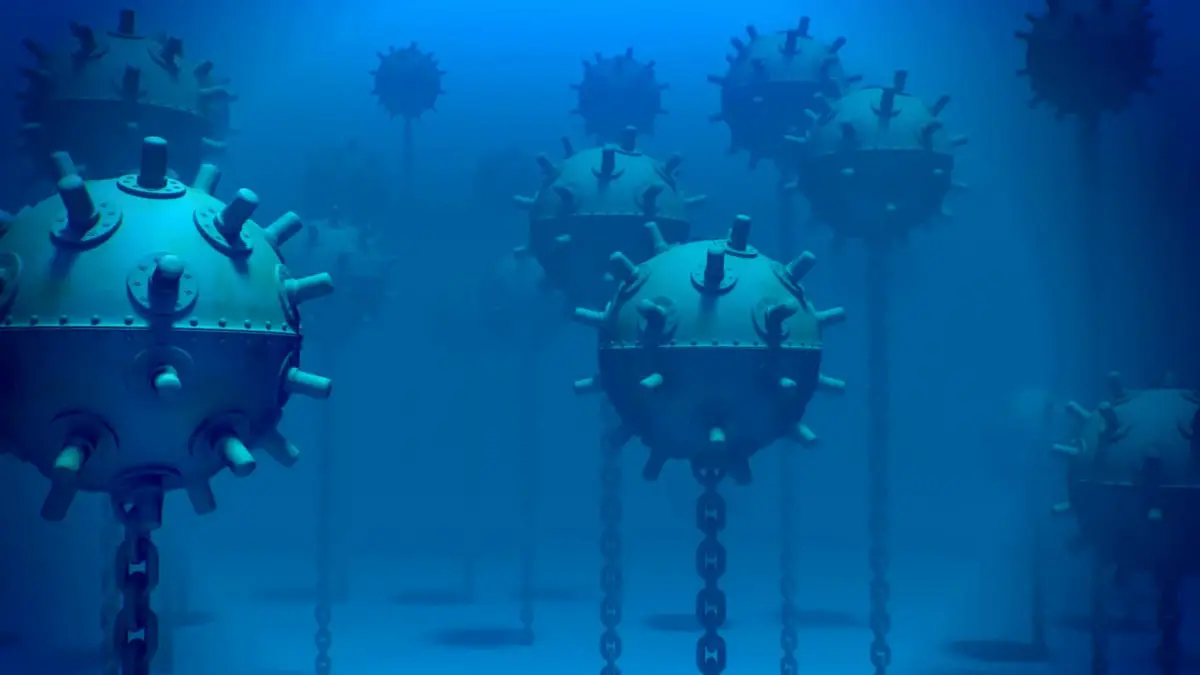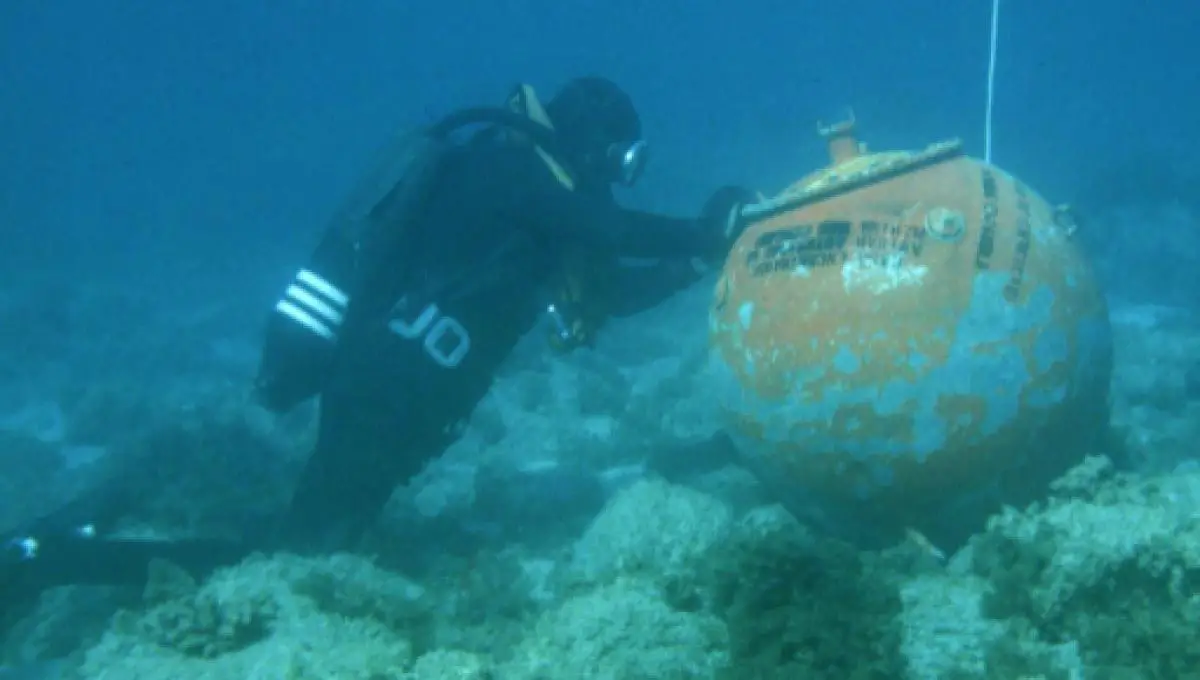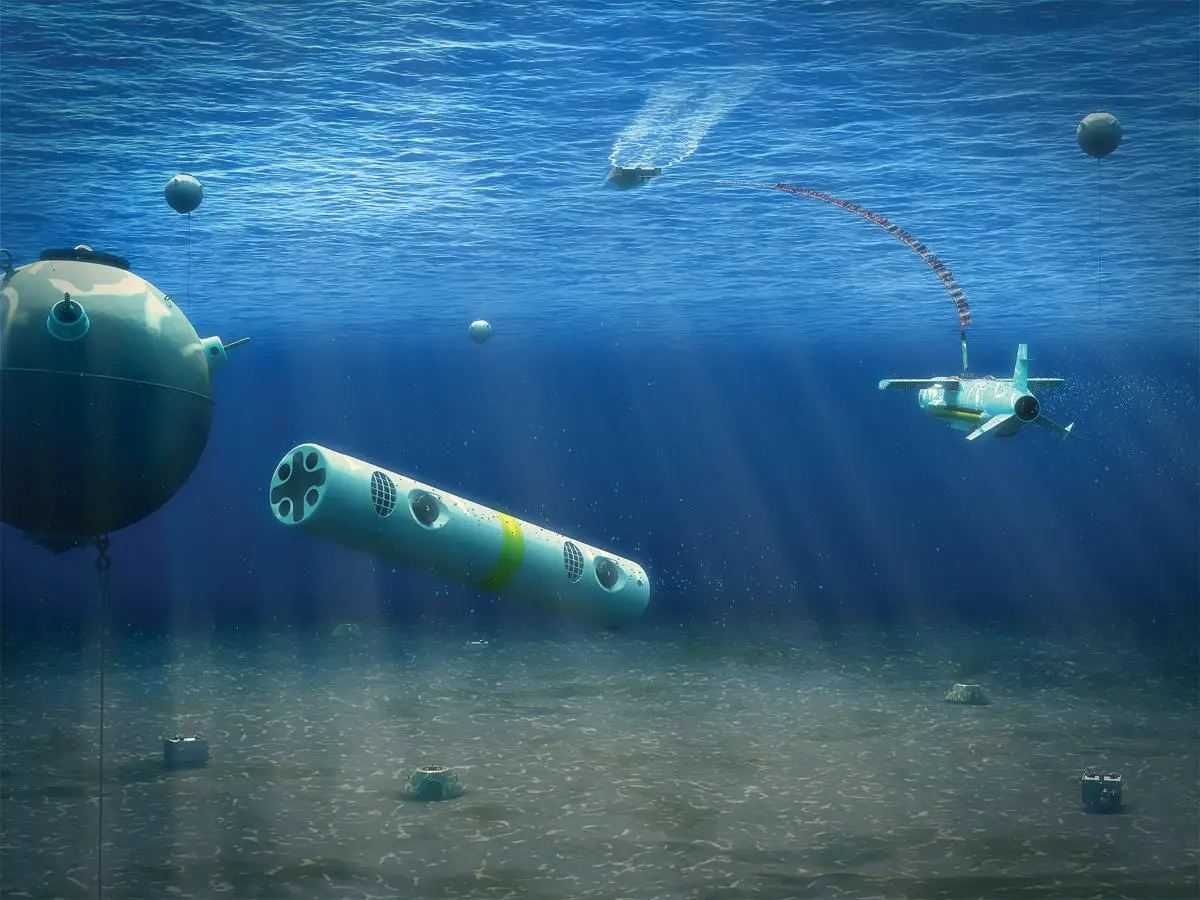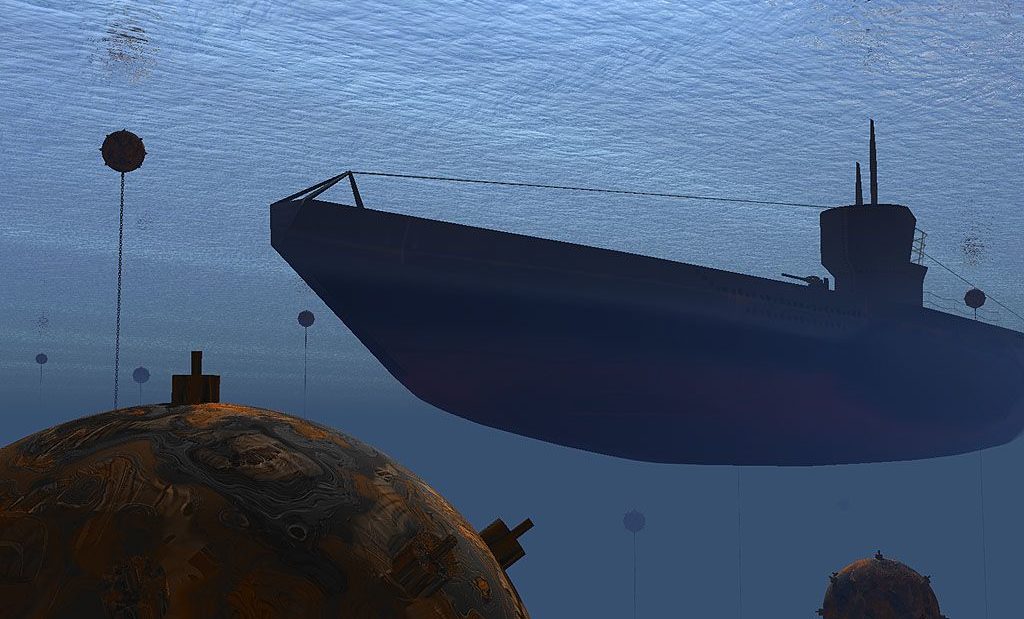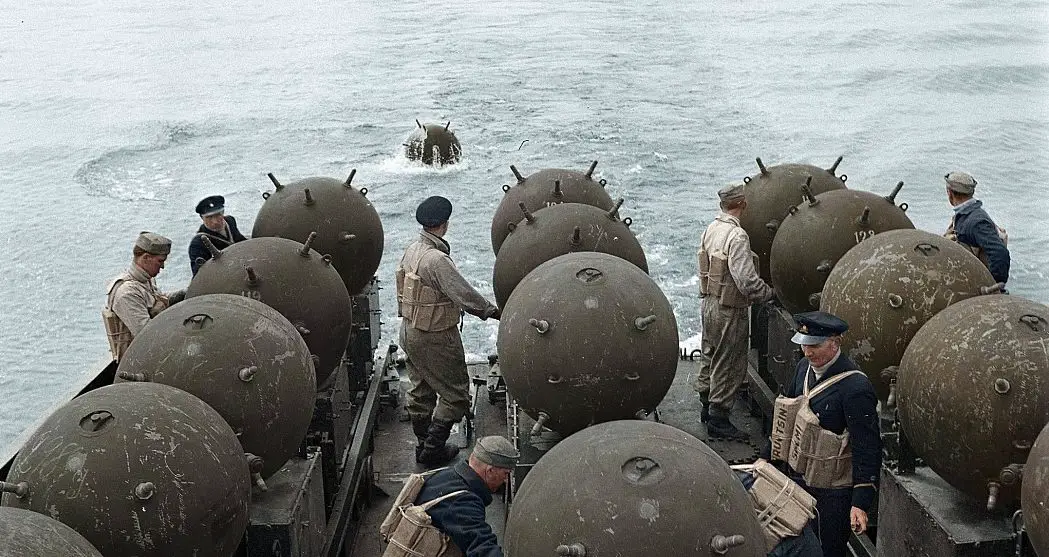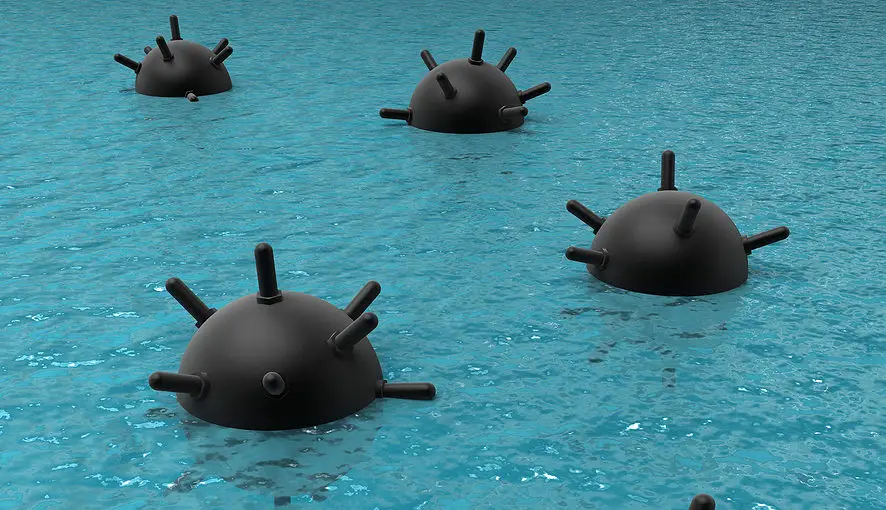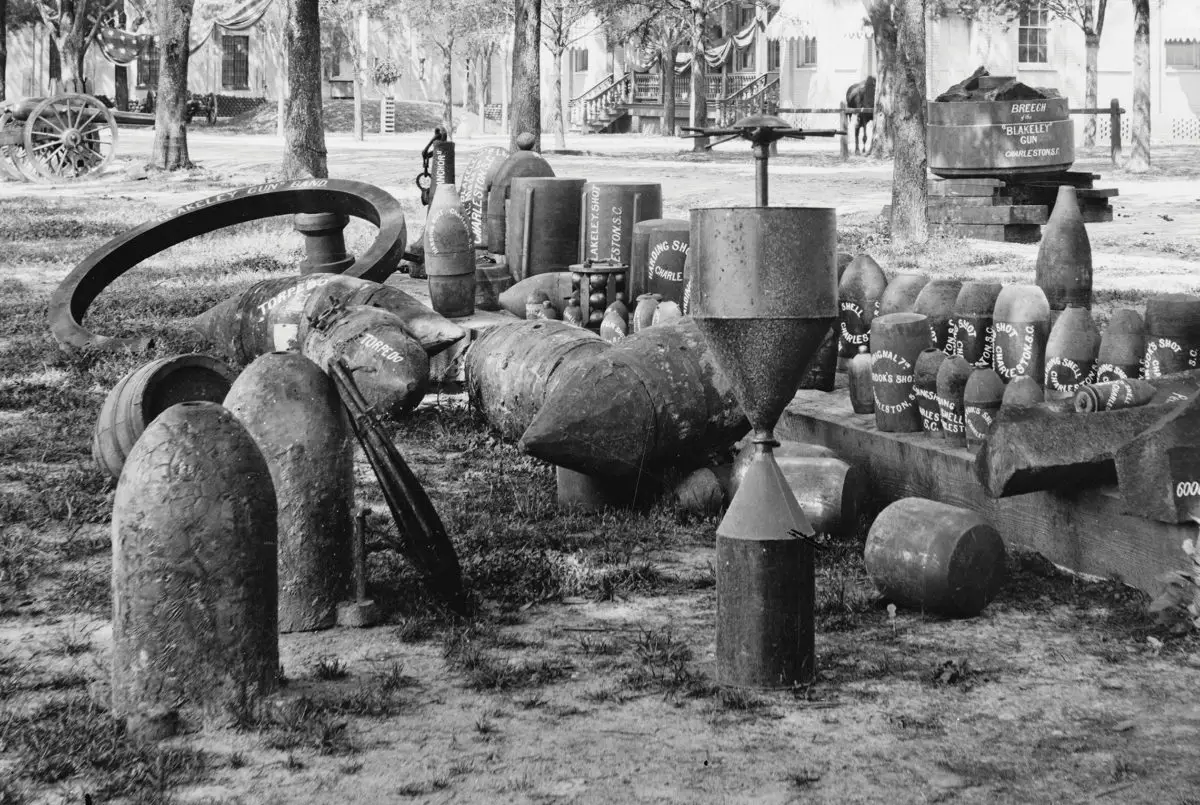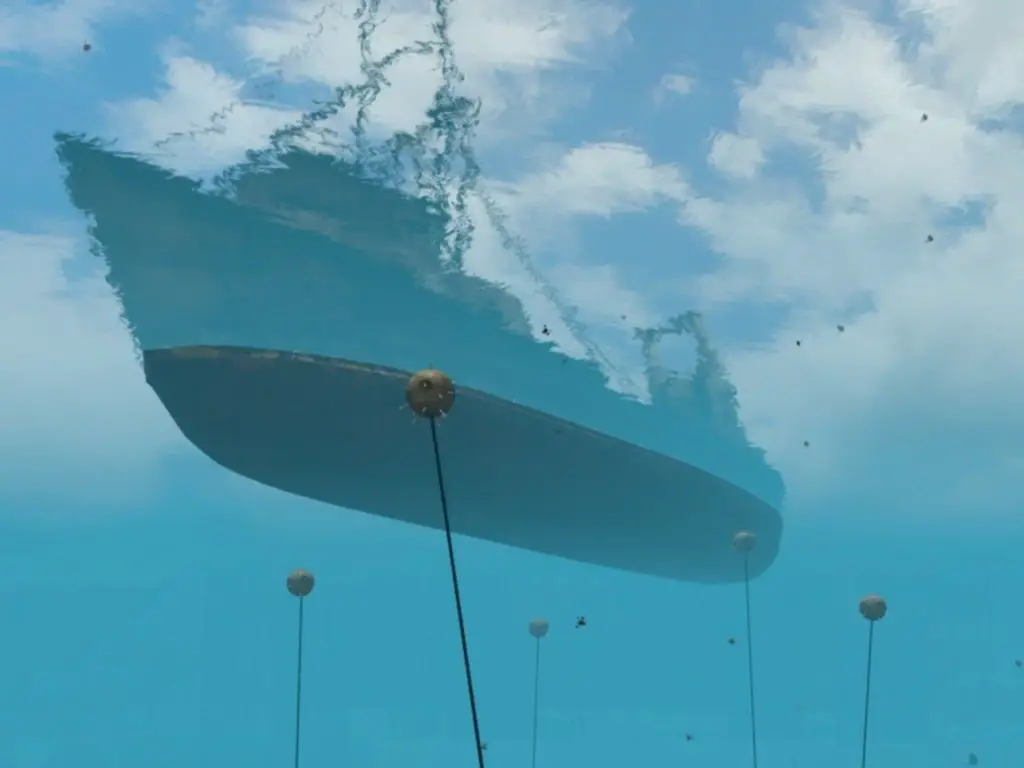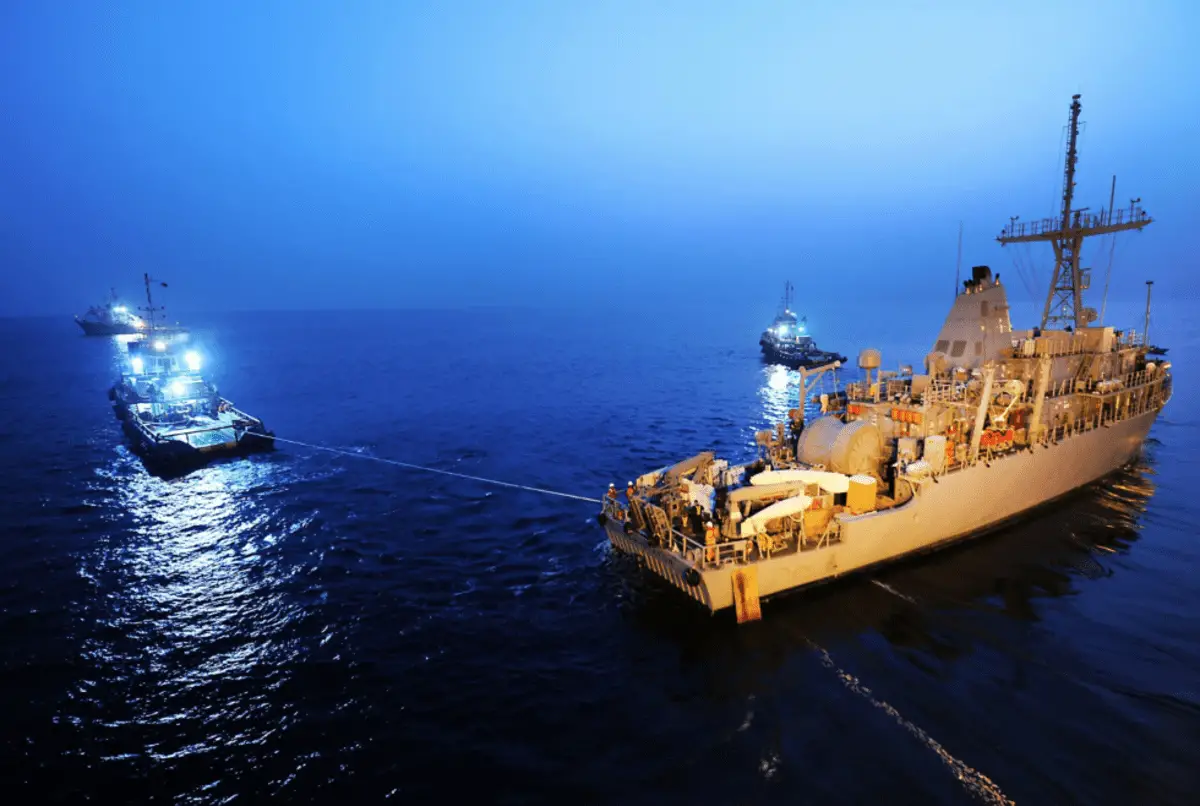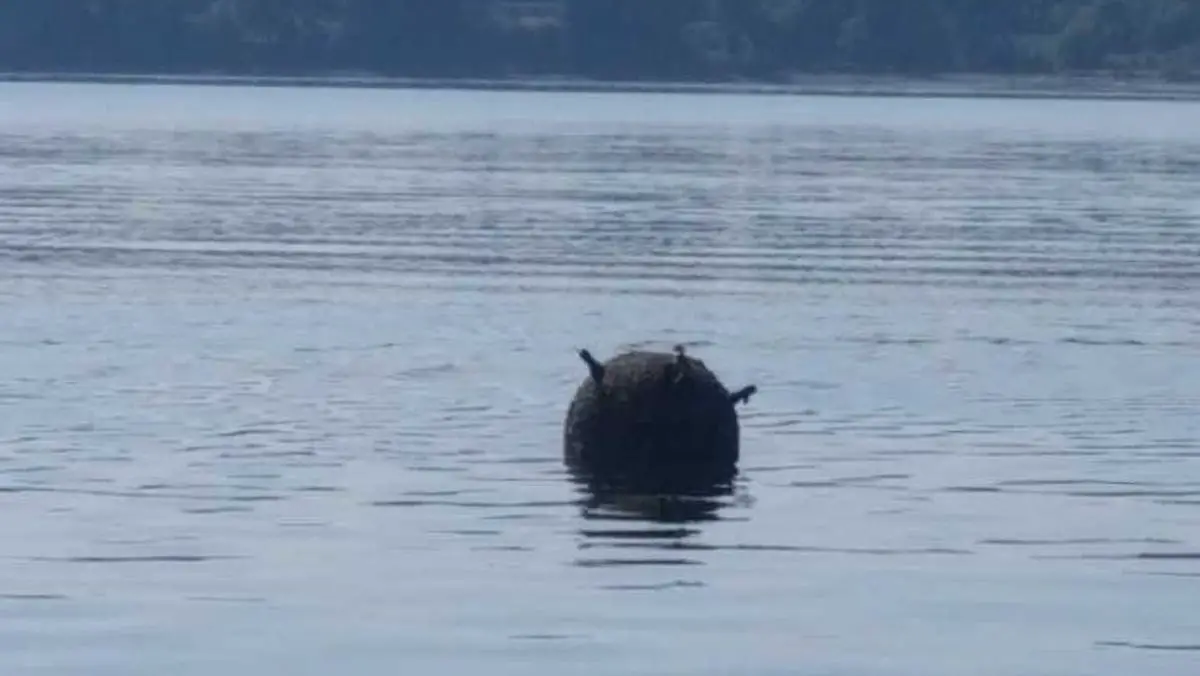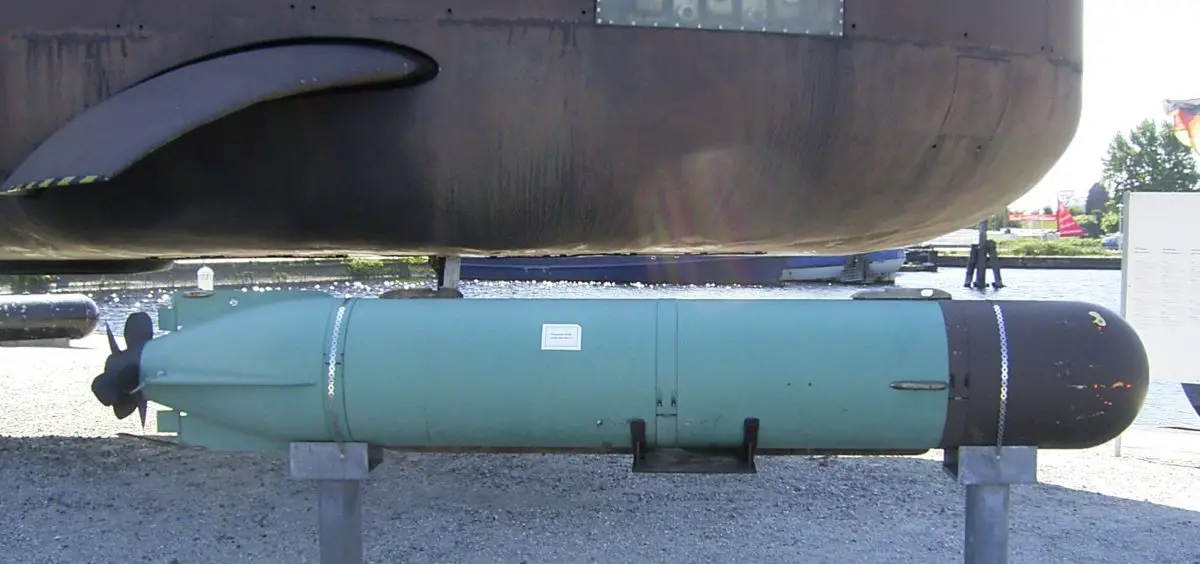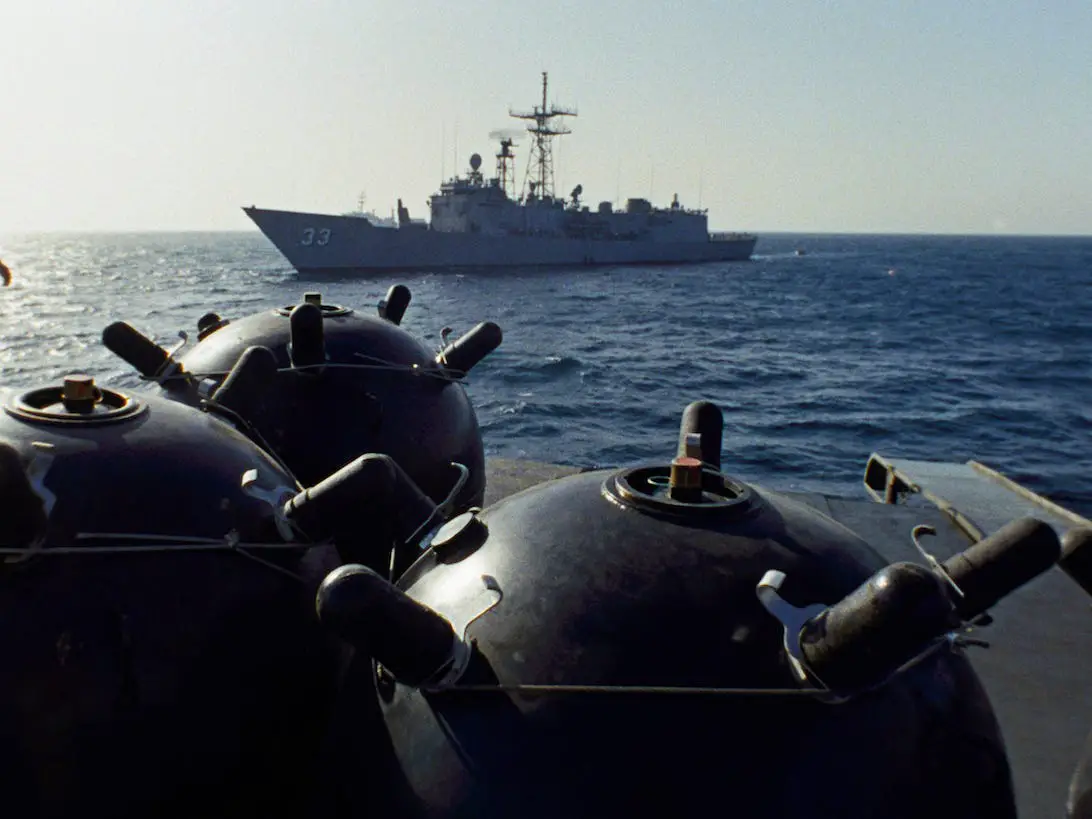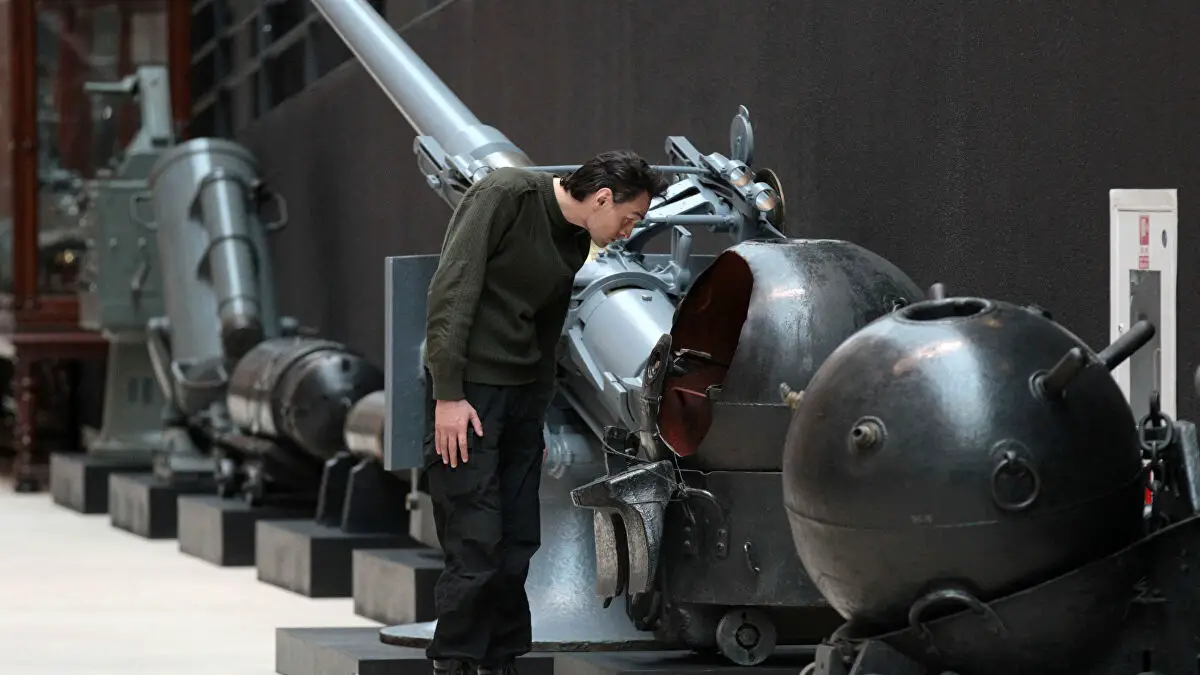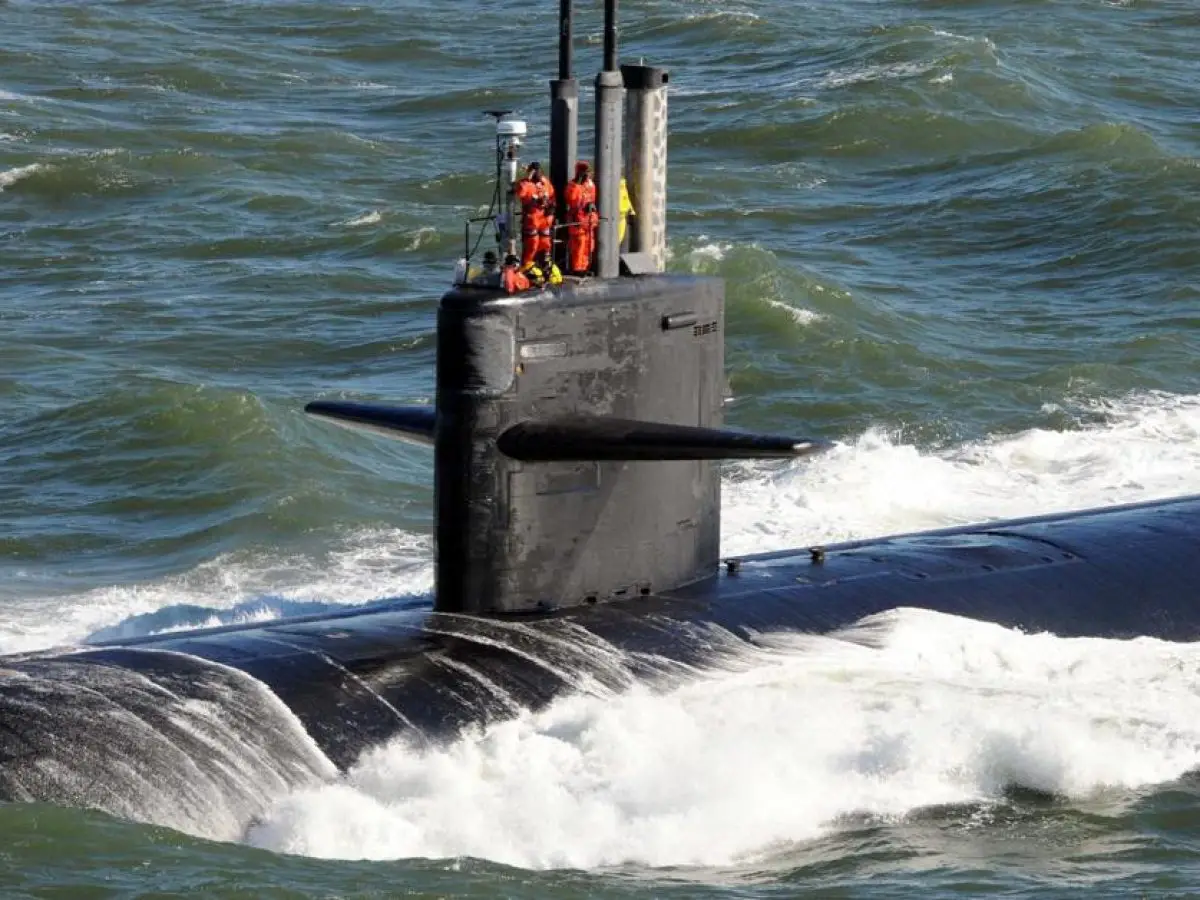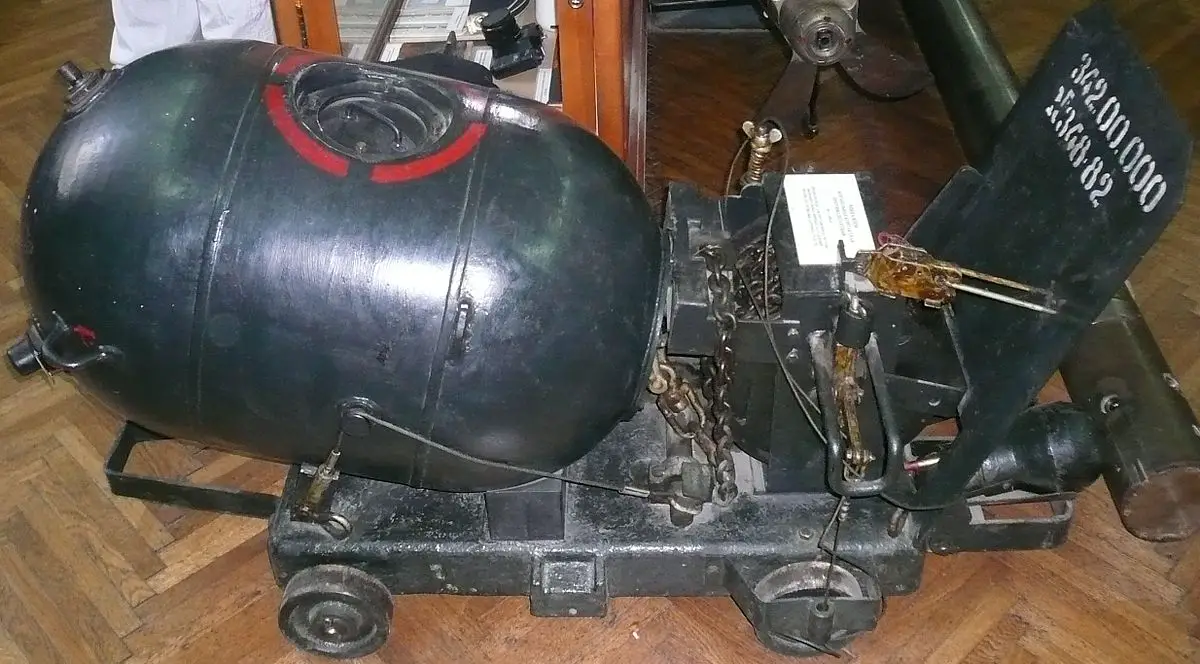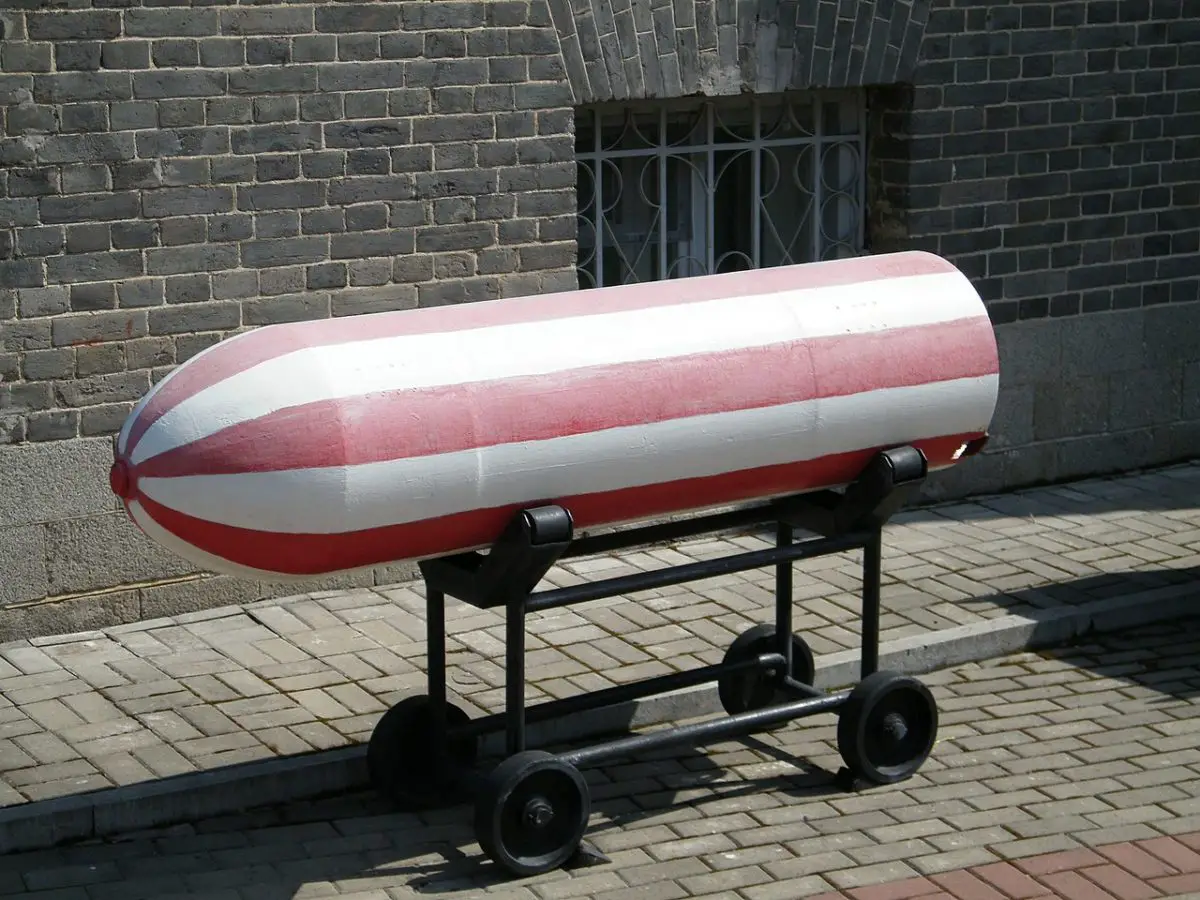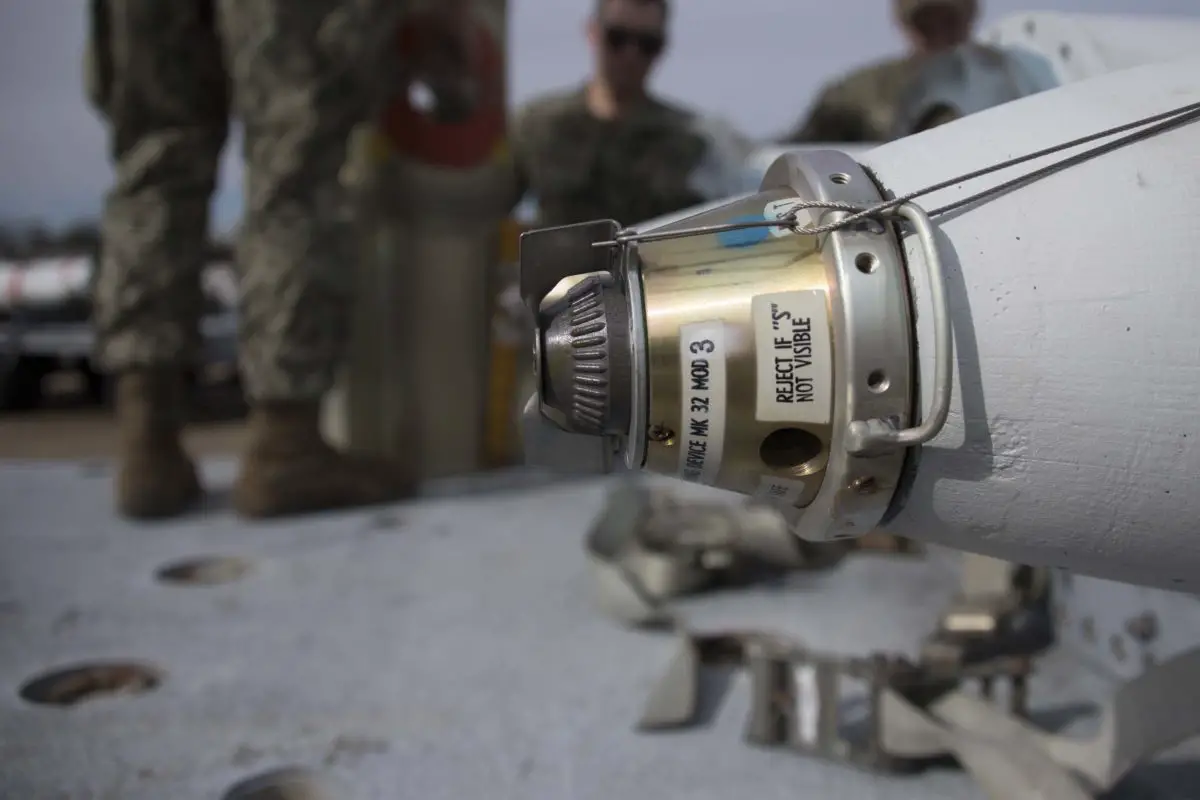Submarine mines are explosive devices that, because of their floating casing, great power and range, were easily deployed at sea during the course of the world wars, all with the aim of destroying enemy ships and submarines. We invite you to learn more about these deadly weapons that were used in warfare to win many of the battles fought on the high seas.
Indice De Contenido
Introduction
In ancient times, bloody wars were fought which resulted in the loss of many human lives in the world, without taking into account all the material losses as a result of these bloody battles, in which generally two main sides faced each other, each of them being supported by some allied nations.
One of the weapons of war used was the submarine mine, which was nothing more than a bomb with the characteristic of being a virtually blind weapon, unable to distinguish between friends, enemies or neutrals.
This was one of the factors that led to naval mines being considered as destructive elements that could reach any ship that encountered them at sea, almost completely destroying it, even if it was not part of the war, as the mines originally exploded as soon as they reached any target.
Over the years, many of these sea mines, also known as fixed torpedoes, remained on the seabed without being activated, thus continuing to pose an imminent danger in the waters.
These devices have a variety of detonation mechanisms, some of which are manual, some of which are triggered by pressure, and many of which have even been created with sophisticated electronic mechanisms that allow them to be activated by sound or magnetic waves, with terrible consequences when they hit a submarine or a ship.
An example of the damage that can be caused by the firing of a naval mine was observed during the Civil War, known as the American Civil War from 1861 to 1865, with the sinking of the USS Cairo, a river gunboat also from the United States, which was on the Union side.
Stay with us to find out more about this interesting subject, which is part of the history of mankind, but which is relevant to the appearance of this weapon of war, which has been used in most of the wars that have taken place in the world, and which it is hoped will never be used again.
Apart from all the human and material losses they caused, when they exploded they also took the lives of innumerable marine creatures that populated the seas and, as a result of the contamination they caused, destroyed an infinite number of important ecosystems on the planet.
What are sea mines?
A sea mine is an explosive device designed to destroy targets at sea, be they ships, submarines or any other structure in its path.
They can be laid in a number of ways, one of which is by using minelayers, which are naval vessels that are deployed in wartime to create large minefields in a given area.
They can also be laid by submarines, aircraft, converted ships, or even manually in a harbour. Their specifications are usually quite broad, so they can be both inexpensive and sophisticated, costing millions of dollars to produce.
These weapons are often equipped with sensors and can be launched by rockets or torpedoes. For this reason, they have been part of the armament of less powerful enemies, where it is statistically more expensive to remove them from a location than to place them there.
Incredible as it may seem, there are still naval minefields from the Second World War, which ended in 1945, that have not been cleared due to their vast size. But where there is a chance, many of them are still dangerous.
Mines can be seen as silent enemies waiting to trap those who approach them, used offensively in lakes, rivers, seas and oceans, and as psychological weapons, because once laid in enemy waters, they were used to prevent the passage of many trade routes, especially ships carrying reinforcements or supplies to fight the war.
They were used to psychologically frighten nations into not sailing along those trade routes, and thus preventing them from coming to the aid of the enemy.
How do they work?
Naval mines are part of ancient history, but they are still effective in modern naval warfare, although today’s mines have a safety system to ensure their manipulation, allowing them to be stored with the possibility of self-destruction.
In general, a naval mine physically contains handling equipment and a complete device armed by a series of explosives in its casing; some have target recognition equipment and a battery.
Some explode because they have a device that detects gunfire, movement, sound, magnetic waves or pressure, which triggers them. This depends on the type of naval mine.
Many of them may not work as intended; they may approach the target without exploding, and then suddenly explode at the least expected moment. What is certain is that the damage they cause is truly horrific.
Used as an offensive weapon in the First World War, they were used both defensively and offensively, endangering the navigation of any ship; they were also considered the best antidote to U-boats, preventing them from passing through certain waters.
Knowing how they work is one of the basic elements to be able to face them; where in general it is necessary to know that what is done depends on the type of sensors by means of which it has been provided, as it was indicated previously, it can be acoustic, seismic, of pressure or magnetic. In a simplified way, we will explain each of them.
- Magnetic: the mine is equipped with magnetometers that detect magnetic fields in any direction; when a ship passes by, its signal is picked up by the mine and converted into electrical impulses that, when they reach a certain number, cause the mine to explode.
- Pressure, in this case the sensors detect negative pressure, which is then converted into electrical signals; this is because the ships move a certain amount of water as they move through the water, which is detected by the mine, which sends the signals to its explosive train and detonates at the precise moment.
- Acoustically, the sound waves detected by the movement of the water, also due to the displacement of a ship, activate electrical signals detected by the mine, in particular by the noise made by the ship’s propellers during its navigation; these vibrations are transmitted by the water itself and consequently the mine is detonated.
- Seismic, they were very similar to the acoustic ones in terms of detonation; but more sensitive than the previous ones, they could even be programmed to detect the slightest movement in the water.
The history
Mines, like other explosives, were invented by the Chinese; there are documents that describe them as early as the Ming Dynasty, Jiao Yu, in the 14th century. It is said that this type of weapon was used against Japanese pirates.
It is said that they were made from a wooden box filled with explosives and sealed with putty.
Years later, in 1637 AD, the writer Song Yingxing described naval mines as devices fitted with a rope to be operated while hidden soldiers waited to ambush the enemy. The purpose of the rope was to turn a mechanism that produced a spark to ignite the mine’s detonator.
In 1574, Ralph Rabbards also began designing mines and presented them to Queen Elizabeth I of England, using a floating firecracker, but this failed, although historical records show that the English used such weapons during the Siege of La Rochelle in 1627, a war against France.
The first American naval mine, developed by David Bushnell, was used during the American Revolutionary War, fought against the British from 1775 to 1783.
In this case, it was a hermetically sealed barrel filled with gunpowder that was thrown into the sea to float towards the enemy and detonated by a sensitive mechanism that caused sparks when it hit a ship.
This is how the history of naval mines began to unfold over the years, appearing in each of the world wars that have devastated mankind. Initially, they were probably used sparingly until the American Civil War, when the world became aware of the devastation these explosive torpedoes could cause.
In the 19th century, a Russian engineer named Pavel Schilling succeeded in detonating a naval mine in 1812 using an electrical circuit. Years later, the ideas of Moritz von Jacobi and Immanuel Nobel were perfected between 1853 and 1856.
These mines were identified as torpedoes and were used in many naval battles. It is worth noting that the United States adopted the naval mine as its main coastal defence weapon after 1865.
In the 20th century, it was also used by the Chinese imperial forces during the Boxer Rebellion, an internal uprising that ended in 1901. They laid mines that were remotely detonated in the Peiho River.
They were also used in the Russo-Japanese War, which lasted from 1904 to 1905, and an attempt was made to stop their use at the Peace Conference in The Hague in 1907. However, this was not achieved and when the First World War broke out they were used again, as they were during the Second World War.
Naval mines have been a weapon of choice in every war, and they are still around today, designed to kill and destroy everything in their path. They have been seen mined in the Red Sea, in ports such as Sandino in Nicaragua, and were used in the 1991 Gulf War, which involved 34 countries.
These are weapons that, it seems, once you know about them, every nation wants to use for its defence, without considering the serious consequences they have for humanity. This is something that must be stopped, so that the mines are considered only as elements to be remembered from history, deactivated in a museum and not in the water, causing unnecessary deaths.
Types of sea mines
Naval mines are not all the same, they can be identified by their type and the way in which they are deployed, used or activated. In general they can be divided into the following types.
Land mines
These types of mines are generally found on the seabed, especially in shallow areas; they are specially designed to sink after being launched into the water and then remain on the seabed to hunt for submarines passing through these waters.
Anchored
This type of naval mine is anchored so that it floats somewhere on the surface and explodes when ships or submarines pass by.
Some of the mines found on beaches are usually of this type, where they have probably broken loose from their moorings and then floated to the shore.
Tunnel
This type of mine consists of floating mines that form a kind of barrier and are detonated by contact as ships pass by. They have been used sparingly since the Hague Convention was signed in 1907.
Another way in which mines have been classified is according to their location.
Mines can be classified according to the way in which they are laid for attack during a war.
Moored, these are the mines we have identified above of the anchored type, which are kept afloat at a certain depth in the water by means of an anchor. They can also have the characteristic of being contact mines, which are detonated when they hit ships.
It is estimated that this type of mine can have a useful life of around 10 years, with a weight of 200 kg, of which at least 80 kg consists of explosives.
Chained, this type of mine is usually arranged with a steel chain to keep them afloat, 18 metres apart. Their purpose is to be dragged along by passing ships, detonating on both sides of their hulls in order to cause as much destruction as possible, and they were widely used in the Second World War.
Mine bouquets, consisting of a single anchor to which a group of mines are attached and left to float in order to provoke a reaction from each of them in turn, are on the other hand a rather delicate and unreliable arrangement.
Bottom mines, used in shallow waters, especially when it is desired to attack submarines, are placed on the bottom of the sea, in which case they are quite difficult to detect and to sweep properly.
On the other hand, very heavy mines are generally used in this case, weighing up to 1,500 kg and carrying explosives of the order of 1,400 kg; on the other hand, they are usually equipped with several sensors, which makes them extremely dangerous.
Floating mines, which are placed on the surface of the sea and dragged along by currents. This type of mine was used on several occasions in both the First and Second World Wars.
However, these mines were used to frighten the enemy as they were not very effective, although many of the other mines that were tied up could be released and drifted away.
Modern mines have the advantage of having a mechanism to deactivate them if they become loose, although this should not be relied upon as the mine remains alive and the mechanism could fail at the wrong time.
Emergent mines are a special type of mine laying or deployment; they are first anchored, then released and move vertically, either naturally or by means of a built-in motor.
The idea behind this type of mine lay is that only one of the mines is visible while the others remain vertically as a curtain, allowing them to cover a greater depth range, making them ideal for attacking a submarine.
Self-propelled mines are mines, generally identified as torpedoes, which have special devices that allow them to stalk and even pursue the enemy. They are usually equipped with fuses to detect acoustic and magnetic signals by computer.
These are mines of advanced technology, such as the Mark 60 Captor or 24, codenamed Fido, used by the United States Armed Forces.
In terms of how they are detonated, it has been observed that these mines have the ability to remain stable until their sensors detect movement or waves, at which point they are activated and explode immediately, so they have also been classified according to the following types
Contact, where the mine simply explodes when it hits its target. Galvanoplasty, where the mine is activated by hitting the protruding cap of the mine, which contains a galvanic cell.
On the other hand, some of them are equipped with an antenna, so they are activated when this metal device comes into contact with the hull of the ship or submarine that is their target.
Without contact, when the mine explodes on its own, as soon as it is activated by the presence of sensors, either by acoustic, magnetic, hydrodynamic or combined signals.
Multiplicity, they are more demanding to detonate as they only detonate after several detections, so they may miss some targets and explode after the third or fourth, depending on how they are programmed.
Triggering is when the mine is activated by induced detonation, either by its own sensors or by remote control.
Selectivity, mines can be triggered by any target in their path, but some have the ability to detect and attack specific points as they are programmed to detect certain characteristics, such as the BAE Stonefish.
They are generally used in TNT mines, like other explosives, but there are some with nuclear warhead charges, but all known ones are experimental and, as far as is known, have never been mass-produced.
On the other hand, there are those that are considered to be dummy mines, made of plastic drums filled with concrete or sand, with the aim of confusing the enemy and making it difficult for them to remove mines in an area full of them, as they will have to stop to examine each one by tracking it with sonar, where their impulses are detected.
The most dangerous sea mines
All naval mines are dangerous, unless they are fictitious, which is why it is important to be very careful in their presence, as the damage they cause can be considerable, depending on the amount of explosives they contain.
With regard to the most dangerous naval mines in the world, we can point out that the Soviets were great designers of this type of war weapon, which has its place in history, so we will give you a tour of some of these mines, which are considered very deadly, without going into details about their explosives, because this is an element that is considered a secret within the nation that manufactures the weapon of war.
The M-26
This is an extremely terrible mine used before the Second World War; it was designed by the Russians in 1920, with a capacity of 250 kilograms, anchor type, but equipped with a mechanical detonator.
It was a mine widely used by the Russians, in fact they had more than 27,000 of them, because it could be laid horizontally using an anchor, and was generally used in the Black Sea or against the Japanese forces.
The KB
Later in 1941, a KB anti-ship fuse mine, often used as an anti-submarine weapon, was developed. The feature of this new design was that it used iron safety cones. However, these cones were attached to the mine by pins and a steel band with a sugar fuse.
Its activation was interesting because it was installed by removing the pins holding the cones and then, when the sugar melted, the strap was released and the mine exploded, hence the name Sugar Death.
The KRM
Years after the war, in 1957, the Russians created the self-propelled underwater missile, identified as a KRM mine, which served as a model for the creation of new types of weapons.
This type of mine was able to detect and classify its target because it had both an active and passive acoustic system that started the engine and detonated the mine. It was equipped with a 300-kilogram charge and placed at depths of up to 100 metres.
PNR 1 and 2
These were anti-ship rocket mines, but the 1960s also saw the development of new mines such as rocket mines and torpedo mines. They were equipped with a dual-channel system for enemy detection and target classification, and were used at depths of up to 600 metres.
This type of mine was introduced into the Soviet Navy’s arsenal as early as 1973, and in 1981 Russia’s first universal anti-submarine torpedo mine was created.
The UDM-2
It was considered to be the universal anti-submarine mine, a weapon of war capable of destroying both ships and submarines of any type.
It was a mine that could be easily transported by ship or plane and then dropped without a parachute, exploding when it hit the water or land, and without being filled with explosives, it weighed 1,350 kilograms.
In the course of wars throughout history, many nations have used naval mines, such as Germany, Japan, the Soviet Union, England, the United States and some others, each with the mines available to them as part of their war armament.
However, many of these mines have not exploded and remain as part of the seabed, posing a threat to the ecosystem as a whole, both as an element that pollutes the seabed and as a danger to the many marine species that live in these areas.
Some of these mines are found in ships or submarines that have sunk without exploding and therefore remain a latent threat as the ships deteriorate over the years, and these weapons can easily be detonated by large fish, including whales, dolphins or sharks, and even sea turtles, many of which are in danger of extinction.
It is very sad that after so many years of bloody wars in the world, there is still the possibility of finding thousands of these unexploded mines hidden in the depths of the ocean, with no one knowing where to look for them unless someone stumbles across them.
Obviously those found in wrecks and submarines have already been identified, but they are not the only ones, for as we have seen in the course of our article, extensive minefields were created in the sea where many of these mines could be released and drift, but there is no record of how many were exploded or how many were unexploded.
If the content of this article has allowed you to get to know the Minas Marinas, we recommend you read the following topics.
- Lake Patzcuaro
- Lleu Lleu Lake
- Gallocanta Lagoon
- Lakes of Chapultepec

